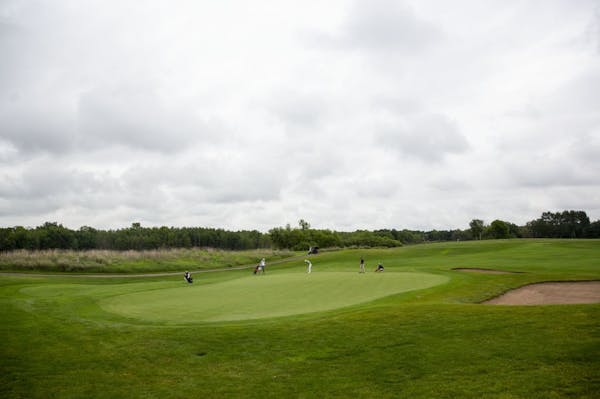David Frost won the 2010 3M Championship with a record score of 25 under par and Kenny Perry won four years later at 23 under, both back when the PGA Tour Champions' senior players came to TPC Twin Cities for three tournament days every summer.
Now the PGA Tour debuts its inaugural 3M Open Thursday in Blaine, with one more round and this concession: The world's best golfers are going to go low.
"I'm not sure you can make any course hard enough for those guys," Tom Lehman said.
But maybe not as low as the 50-plus crowd did.
Lehman, the Minnesota native and 1996 British Open winner, co-designed TPC Twin Cities when the course opened in 2001. Last fall, he supervised changes that lengthened, narrowed and toughened the course. It was originally built featuring wide fairways and big greens to counter the winds that regularly blow across the former sod farm.
"Are these guys going to shoot 20 under?" asked four-time PGA Tour winner and Minnesotan Tim Herron, who has played there multiple times this summer. "Yeah, they are if you look at what guys did at Pebble. But this course has got some length and some teeth, too … You're going to still see scores low, but it's not going to be stupid low."
Gary Woodland won last month's U.S. Open — traditionally considered golf's toughest test — at 13 under at iconic Pebble Beach. Herron considers TPC Twin Cities easier than Jack Nicklaus' Muirfield in Ohio, where Patrick Cantlay went 19 under last month, and harder than TPC Deere Run, where Michael Kim won the John Deere Classic last July at 27 under.
3M Open executive director Hollis Cavner says he wants "birdies and trainwrecks" and calls bogeys boring and bad.
The course now plays at par 71 and can be stretched to nearly 7,500 yards. A new back tee placed beyond a road lengthens No. 2 to 468 yards and makes it what Lehman calls maybe the most challenging drive on the course. The par-5 No. 3 now is a 501-yard par 4 — one of two 500-plus par 4s. A new tee built on an angle across No. 17's pond can make it play 229 yards.
"It's a lot harder than it used to be," Cavner said.
A new back tee makes the short par-4 No. 7 play 381 yards. On the closing par-5 18th hole, the water hazard that fronts the green is doubled in size, which narrows what Lehman called the "widest fairway in competitive golf" to 30 yards. The tee has been moved to a hillside beyond the 17th green, increasing the hole to nearly 600 yards.
It also creates a demanding left-to-right drive to a pinched landing area that still leaves big hitters who drive the ball 320 yards another 240 to the green for an eagle chance, perhaps to win. That is, if they don't drive the ball through the narrowed fairway into rough thick enough.
"The length, for me it's a totally different golf course than it was before," Herron said. "Brooks Koepka might not think it's such a big deal because he hits it so far. But for me, it's a lot longer."
Trees have been planted, bunkers moved, chipping areas around greens expanded and tee boxes built. Rough has also been grown and fairways narrowed.
Greens have been left largely untouched, except for the short par-4 No. 10, where Lehman removed the green's back right quadrant. That shallows and angles the green — good course architecture is all about angles — and requires a more precise approach.
No. 10 is one of three holes tour officials can shorten into drivable par 4s after Friday, any one of which could provide what Cavner calls "fireworks" starting on July 4th.
The weather forecast calls for chances of thunderstorms almost all week. But Cavner is pulling for sun, heat and that Blaine breeze.
"If it bakes out and it gets hard and fast, it'd be so much fun," Cavner said. "And if we get wind, it's a game-changer."

Reusse: There's no doubt Finch is the right coach for the Wolves
Ex-minor league umpire sues MLB, says he was harassed by female ump, fired for being bisexual man
Nootbaar, Gibson spark Cardinals to 5-1 victory over Diamondbacks

